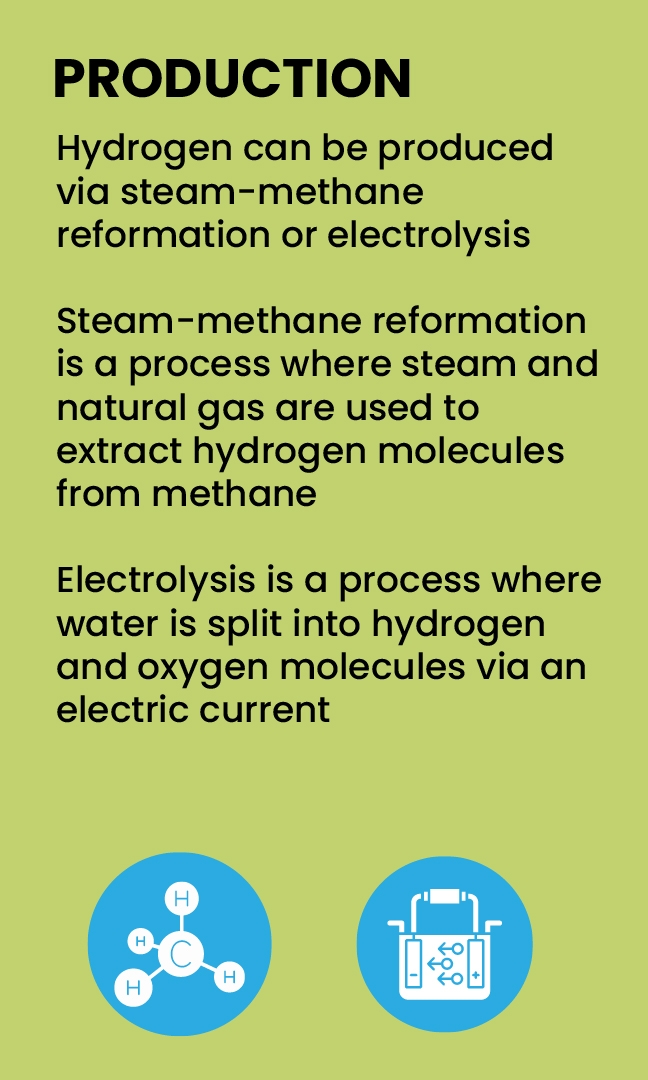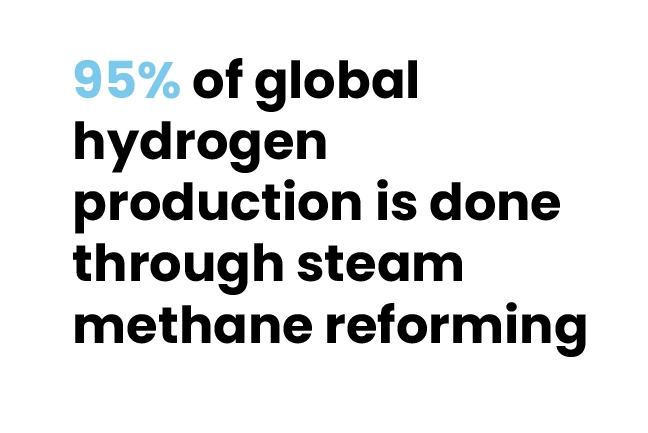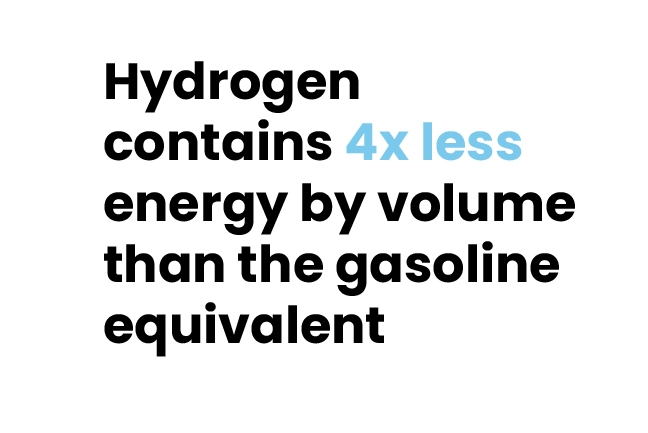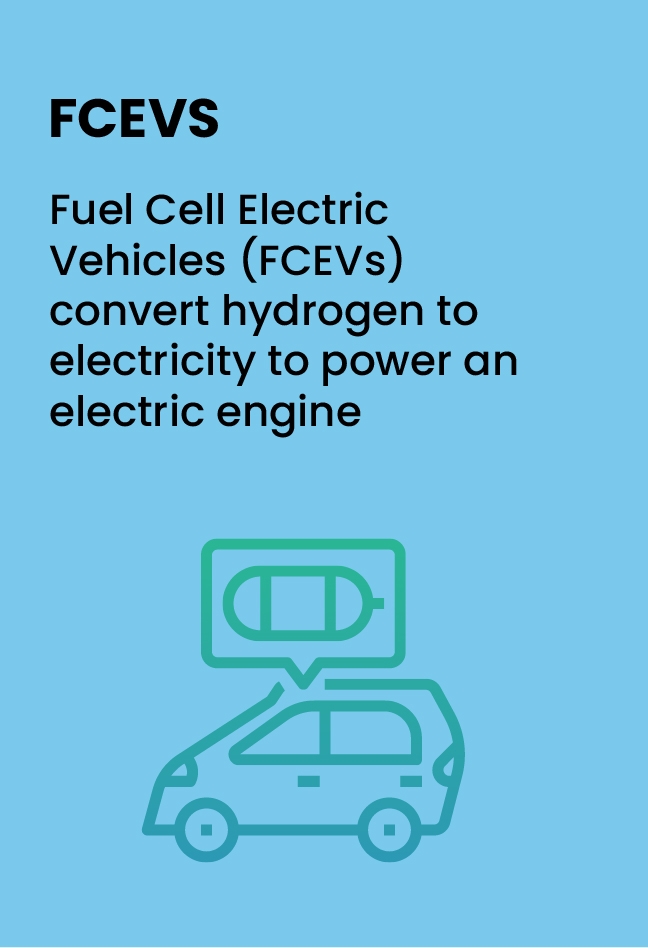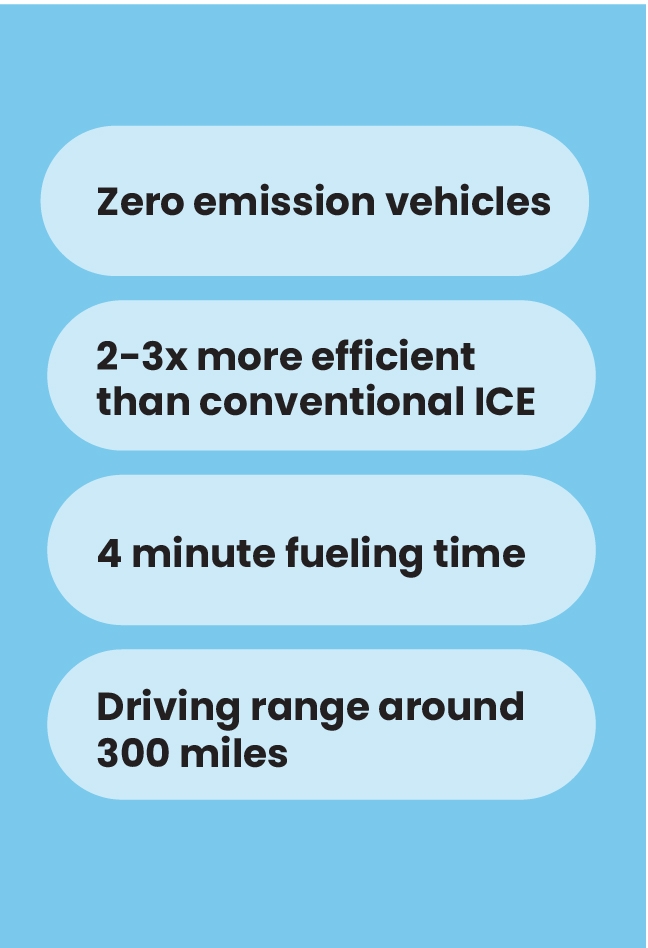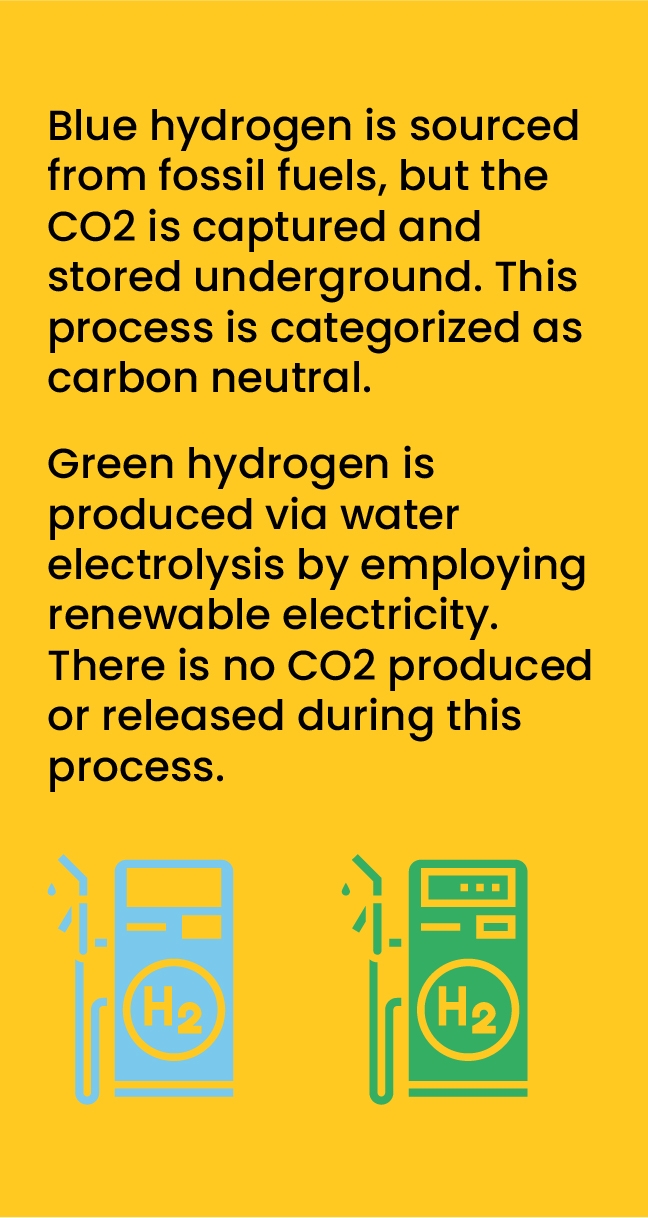Hydrogen
Hydrogen is a potentially emissions- free alternative fuel that can be produced from domestic resources for use in fuel cell vehicles.
Hydrogen is the most abundant element in the Universe and can be used as an alternative transportation fuel. It can be burned directly or mixed with oxygen in a fuel cell, which is used similarly to an EV battery. A fuel cell electric motor is 2-3 times more efficient than an internal combustion engine. However, hydrogen's low volume energy content requires storage at high pressures and low temperatures. Most current applications of hydrogen store it onboard as a compressed gas in high-pressure tanks.
Major research and development in recent years to make this fuel more accessible to the public has resulted in rollout of light-duty vehicles to retail consumers, as well as medium-and heavy-duty buses and truck fleets. Current market light-duty FCEVs have a driving range of over 300 miles and can refuel in 3-5 minutes, comparable with petroleum and gasoline vehicles.
While hydrogen vehicles have zero tailpipe emissions, hydrogen production is not necessarily emissions free. Like electricity, hydrogen is an energy carrier created from other primary energy sources. The main method for hydrogen production today is steam methane reforming, where steam reacts with natural gas under pressure to produce hydrogen (“grey hydrogen”) without capturing waste GHG emissions. Hydrogen can also be produced through electrolysis or splitting a molecule of water (H2O) to capture hydrogen, with oxygen as a byproduct. Electrolysis is an energy intensive process, but can be powered by 100% renewable energy (“green hydrogen”).
Although the production of grey hydrogen results in carbon emissions, it consistently demonstrates emissions reduction compared to gasoline vehicles across various scenarios, except in instances where the hydrogen is produced through electrolysis from conventional grid electricity. As the renewable content in the grid mix increases, however, GHG emissions associated with electrolysis are mitigated. Blue hydrogen is an environmental improvement over grey, as it captures and permanently stores waste GHG emissions. While promising, capture and storage of GHG emissions remains an unproven technology at scale. Although green hydrogen has no net emissions, its availability is limited.
Economic barriers hinder widespread adoption of hydrogen, with higher costs for vehicles, infrastructure, and fuel. In 2022 as natural gas prices spiked, hydrogen produced from natural gas reached $10/kg and green hydrogen reached $16/kg. As a result, operating costs for hydrogen vehicles may be higher than for other alternative fuel vehicle options.
Despite technological advances, hydrogen fuel infrastructure remains in its infancy. There are currently 59 retail hydrogen stations across the U.S., primarily in California where most hydrogen fuel is produced. Transport from production facilities to fueling station presents many challenges, requiring a dedicated pipeline network. There are no hydrogen fuel stations in Florida, although several major energy producers, including TECO and NextEra Energy, are currently gearing up to provide hydrogen to customers in the state.

